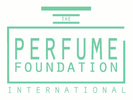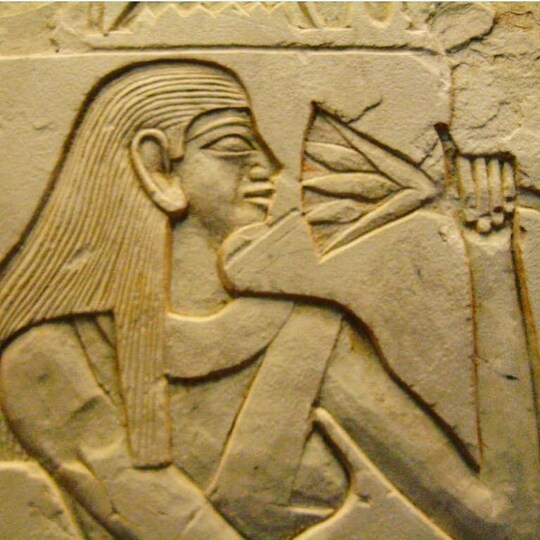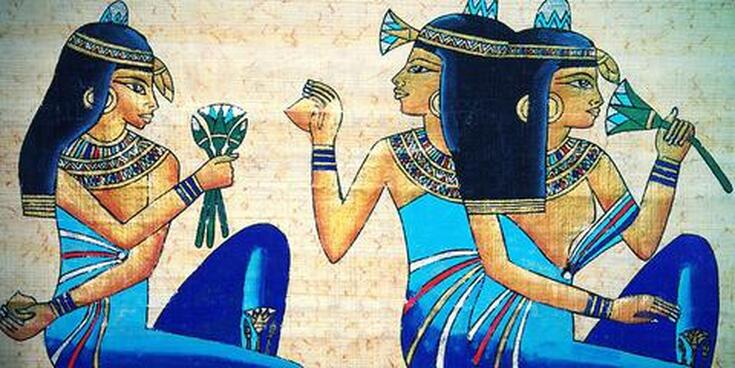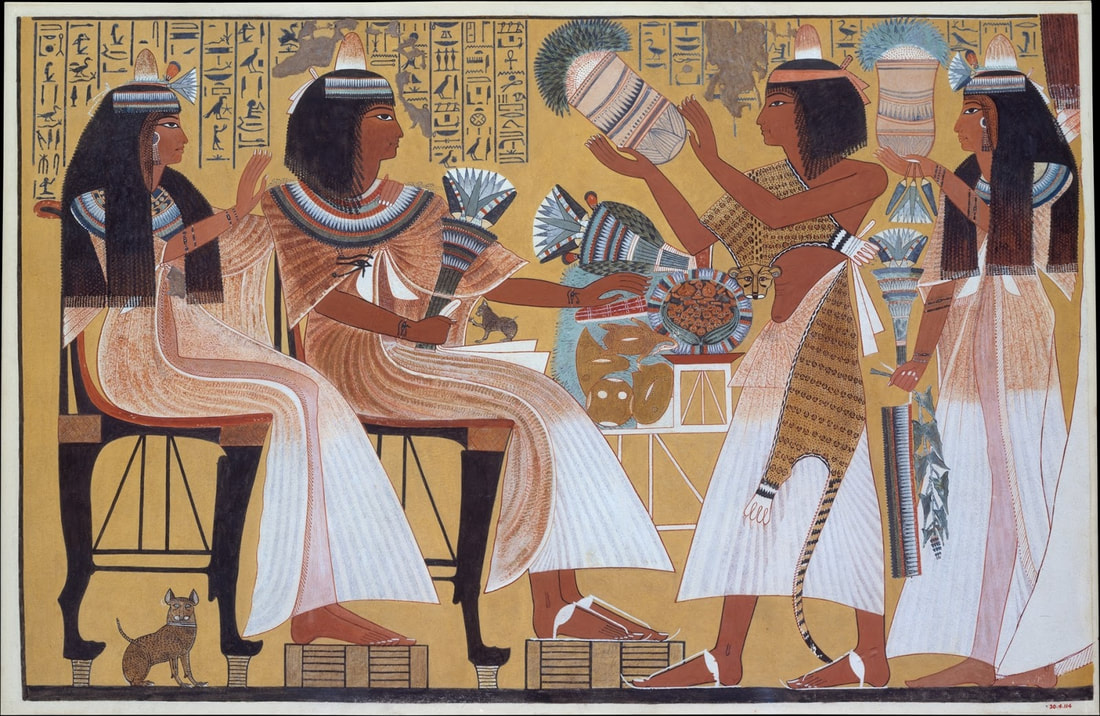|
By Creezy Courtoy, Perfume Historian and Anthropologist For a long time, Perfume remained an important source of revenue for Greece. In the Bronze Age, Egypt, due to its geographical, protected and isolated location and by its geological wealth and cultures, was obliged to import raw materials from Arabia and the Aegean Islands. Egypt was rich in gold, but did not possess the raw materials necessary for making perfumes. Arabs, Hadramaout (South Yemen) and Dhofar (Oman) provided Egypt with scented woods and resins (myrrh, incense, olebanon) and Greeks provided flowers, herbs and their talents of perfumers in the confection of perfumed oils. Greece was then a country of farmers, breeders, Artisan Corporations and a fighting aristocracy. Greece was a country of scents, herbs, flowers and plants. Due to its geographical location and its numerous surrounding islands, Greece was a gateway to Asia Minor, Syria and Egypt. The Greeks are credited for having added to spices, to gums and to balms, oils scented with flowers. Flowers and plants used for export had to be preserved and transformed. Olive oil, one of the main resources of Greece, was used as an ointment and as an excipient or absorbent in perfume oils. The Greeks practiced ‘enfleurage’ and from an early age, the art of creating perfumed oils. In the time of Ancient Egypt, perfume was used mainly to communicate with the gods; during Ancient Greece, it was used to resemble the gods. Perfume was actually used by Egyptians but never throughout history could Egyptians, impregnated with fragrant scents, assist human divination, not only in the sculptural art that gave the gods their human faces and bodies, but also in the wearing of perfume that participated in this quest of perfection by making humans more divine. Since gods smell good, to be like them you must smell divinely good. The Greeks associate perfume to the erotic power of the union of two people. The Greeks buried their dead with their possessions and a terracotta vase or alabaster containing perfume. For poor people, vials painted onto the coffin replaced the alabasters. The perfume played the role of intermediary between the world of people and that of Gods and helped the dead to reach the other world. In everyday life, perfume was not a neutral thing, « thion », « myron » or a simple aroma but a feminine being. It was used in and for everything; as a life elixir, a nectar, and a ragweed. It gave hope of immortality to humans because the Gods were beautiful and immortal. For the author Virgil, Venus (Aphrodite) created the rose perfume. "One day, Venus wanted to cut a white flower and pricked herself, covering her with an everlasting purple color. To Cupid, the rose seemed so beautiful that he kissed it… This is where its smell comes from." Towards the end of the II Millennium BC, the Greek industry acquired knowledge, “art de vivre” and know-how that gave birth to the Europe of Perfumes. Pliny the Elder, in his Natural History text (XIII 9-12 XV, 28-38), mentioned at least 22 kinds of perfumed oils, most of them extracted from plants naturally growing on the island of Crete: cypress, marjoram, broom, iris, spikenard, rose, myrtle, laurel, crocus, lily, juniper, pine, nut, almond, carnation, poppy, coriander, aniseed, cumin, narcissus, and daisy. During the period of the Mycenaeans, even taxes were paid in plants. Circa 1450 BC, perfumery was truly an industry controlled by the Masters of the Mycenaean palaces. The decryption of linear writing par par Alice Kober in 1947 and Michaël Ventris et John Chadwick in 1952, found on 20% of the 7000 Mycenaean clay tablets of the islands of the Aegean Sea show that a prominent position was given to scented products, ointments, incenses, aromatic wine, perfume oils, and spices. Everything listed on these tablets provided a real accounting of orders and exports. Perfumery, in Greece was mainly a branch of medical science. Some odors excited or inspired while others healed. Hippocrates studied skincare in a comprehensive manner and advocated perfumed baths and massages combined with the use of aromatic substances to treat some diseases. He recommended remedies based on sage, cinnamon or cumin, applied either through fumigation, potions, frictions or aromatic baths. He also used perfume as a protection against diseases. It is said that he saved Athens from the plague by burning aromatic woods and hanging flower garlands in the streets. Hippocrates considered various oils used to preserve odors, the use of flowers and spices and the choice of a hundred perfumes for different states of mind and health both for men and women. "Because both senses – taste and smell – are linked one to another, each serves somehow the pleasure of the other and man can thus discover fragrances either because it pleases the taste or the sense of smell.’’ Théophraste (400BC Book of Odors – Chapter III) The Greeks were the first to utilize ‘’packaging’’ and ‘’marketing techniques’’. The alabasters, the oenochoes and the ariballoi were all made of terracotta decorated with trendy themes, perfectly understood by all the populations of the Mediterranean and all refer to Greek mythology or to major known themes. These vials were presented in various sizes in the same way as bottles are today: from the small inexpensive ariballoi vial containing little perfume to the enormous and expensive ariballoi jar which would today correspond to 1 litre of perfume. For a long time, perfumery items remained an important source of revenues for Greece. Cargos of wax-sealed vials and vases containing perfume oils were continuously leaving Peloponnese or Crete towards Mediterranean ports. Masters in the Art of creating perfumes; Masters in the Art of Cosmetics, ornament and make-up; Masters of the Art of packaging: the Greeks created the first industry of perfumery during Ancient times. If you want to learn more about the Anthropology and History of Greece or any other countries, enrol for Creezy Courtoy's Courses or Master Classes
0 Comments
PERFUME IN ANCIENT EGYPT NEFERTUM, God of Perfumers and Aromatherapists by Creezy Courtoy Nefertum (Nefertem, Nefertemu) was an ancient god, the God of Perfumers and Aromatherapists ( at this time perfumers were all aromatherapists ) mentioned in the Pyramid Texts (c. 2350 BC), but became more prominent during the New Kingdom (1539 - c. 1075 BC) and later. Nefertum was the son of Ptah and Sekhmet. Ptah, his father, was the creator God and the Patron of artisans. His mother, Sekhmet, was the Goddess with a dragon head who protected Egypt from its enemies but she was also the Goddess of plants and herbs and the Patron of medical and alchemist distillation. Nefertum ruled over ointments and perfumed oils. In Ancient Egypt, fragrances were considered as the essence of materialization of all things. Nefertum was thus considered the spirit of life. He represented beauty in its perfection and was associated with purification and youthfulness. His symbol and representation was the blue lotus flower, the sacred flower of Egypt through which the sun rose. Nefertum was the god of the lotus blossom who emerged from the primeaval waters at the beginning of time, and a god of perfume and aromatherapy. Nefertum was the god of healing, medicine and beauty and strongly associated with the lotus and often depicted in Egyptian art with a large lotus blossom forming his crown. The lotus was the only flowering plant in Egypt that bloomed nonstop throughout the year. Held by gods and goddesses near the nose of royal kings, queens and pharaohs as its scent, this flower was believed to be restorative and protective. Nefertum was seen as the sun god and the grandson of the sun god. He was not originally worshipped in temples, but was an important aspect of the sun god, who was later discovered as the grandson of the sun god. For the people in Egypt, he was their protector and their healer. Nefertum was linked both to the pleasant scent of the lotus flower and to its medical properties which were well known to the ancient Egyptians. He was also associated with a number of the Egyptians favorite flowers, such as rose, geranium and cornflower. In fact, he could be described as the archetypal aromatherapist. According to one legend, he brought a bouquet of beautiful lotuses to the aging Ra to ease his suffering. As a result, he was described in the Pyramid Texts as "the lotus blossom which is before the nose of Ra". He may have originally been considered to be an aspect of Atum. According to one version of the creation story of the Ennead in Heliopolis, Nefertum (translated as beautiful Atum, or perfect Atum) was born from a blue lotus bud which emerged from the waters of Nun at the beginning of creation. Atum represented the sun and so Nefertum represented the sunrise. He cried because he was alone and his tears created humanity. It was thought that he was born with every sunrise, matured into Atum during the day before passing into the world of the dead every sunset. The cycle of birth in the morning and death every evening (as the sun travelled through the underworld) represented the daily struggle between Chaos and Order (Ma´at). When Atum was absorbed by Ra (Atum-Ra), Nefertum came to be considered as a seperate deity, still closely associated with the newborn sun. Then Ptah was promoted to the chief national god and proclaimed the ultimate creator, and Nefertum was described as his son by either Sekhmet or Bast (both "Daughters of Ra"). However, as the son of Ptah, he also became patron of the perfume and healing arts derived from flowers. Thus, Nefertum was seen as both an aspect of the sun god, and also his grandson. He was also linked to rebirth, both as a personification of the newborn sun and as the patron of many of the necessary ingredients of the mummification process. A passage of the Book of the Dead says the blessed dead will "Rise like Nefertum from the lotus, to the nostrils of Ra, and come forth upon the horizon each day". The Egyptian pantheon is particularly huge and fluid, with a wide variety of deities entering and exiting each other's myths. Nefertum used to be depicted as a beautiful young man wearing a lotus headdress, sometimes standing on the back of a lion. Occasionally he wears a headdress with two feathers and two necklace weights that were fertility symbols associated with Hathor (who in turn was closely associated with the two goddesses described as his mother, Sekhmet and Bast). He was sometimes depicted as a man with the head of a lion or as a reclining lion or cat. In this form, he was associated with the lion god Maahes, who may have been his brother, but may also have been an aspect of Nefertum. Like the newborn sun, he was generally depicted as a beautiful baby sitting on a lotus bud. Sometimes his body was shown wrapped like a mummy, with his arms and face unbound. He also had a lion or cat shape, attributed to his mother. He was also depicted as a human head emerging from a large water lily. For the ancient Egyptians, however, with their holistic understanding of the universe, fragrances and perfumes were not only beautiful, but were also spiritual and therapeutic. The Blue Lotus The lotus flower flourishes on the banks of the Nile. It opens its large petals with the rising of the sun. To the ancient Egyptians it represented the sun because it banished darkness. Blue Lotus played a unique and important role in Ancient Egyptian culture. The plant was widely popular for its mood enhancing and mild psychedelic properties. Used both recreational and for spiritual effects, they often made a concoction out of Blue Lotus and wine.
This flower has even been placed alongside the deceased in ancient tombs. The plant is often depicted on walls and paintings as well, often depicted together with wine. The Blue Lotus was even the symbol for the union of Upper and Lower Egypt. Commonly used in art as a symbol of Upper Egypt. It was often shown with its long stems intertwined with papyrus reeds (a symbol of Lower Egypt) as a representation of the unification of the two lands. For the Ancient Egyptians, The Blue Lotus represented how the sky greeted the sun. Just as the sun rises above the horizon to start the day, the flower opens in the morning. Then just when the sun is setting, the flower closes itself at dusk. And because of this, the Egyptians coined the Blue Lotus the sacred flower of the sun and sun gods. As this symbol means also the creation and rebirth, the lotus is a fixed part of tomb and coffin decoration, often in combination with the scarab, which has similar symbolic meaning. If you want to learn more about national flowers visit my blog powerfulflower.blogspot.com |
Archives
June 2024
Categories
All
|
- HOME
- ABOUT
- IPF CERTIFICATION
-
COURSES
-
MASTER CLASSES
- Teaching Methodology
- Natural Raw Material Extraction Methods >
- Natural Candle Making
- Healing Gardening
- Sustainable Oud MasterClass
- World Perfume History Master Class
- Scent Design and Formula Building >
- Fragrant Botany & Chemistry >
- Perfume Design, Concept and Storytelling
- French Natural Aromachology #1
- French Natural Aromachology #2
- Olfaction Training for Children
- Accords - Chypre
- Accords - White Florals 1
- Accords - Fougeres and Aromatics
- FRAGRANCE DEVELOPMENT
- SPEAKERS
- EXHIBITIONS
- Partners
- Blog
- Contact







 RSS Feed
RSS Feed
